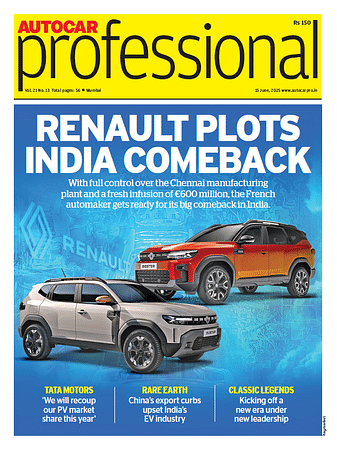Fujitsu's new data processing platform to accelerate use of big automotive data
The new platform facilitates simple and efficient automotive big data analysis from connected cars; leverages stream processing architecture that can add or change content while processing large volumes of IoT data, without stopping.
Fujitsu, the leading Japanese information and communication technology (ICT) company, is to launch a new stream data processing platform for service providers to maximise the use of big data collected from connected cars.
The new platform facilitates simple and efficient automotive big data analysis by leveraging Fujitsu's data processing technology, Dracena, a stream processing architecture that can add or change content while processing large volumes of IoT data, without stopping. The new platform allows for the management and processing of data in discreet units of people and objects including pedestrians, vehicles, roads, and buildings, which are constantly changing in the real world.
This makes it possible to digitally reproduce the surrounding situation, including other vehicles. Continuous data processing additionally offers users the flexibility to add and change services that must operate without disruption, such as real-time hazard prediction for connected cars. Going forward, Fujitsu plans to roll out the service in overseas regions including North America and Europe.
How the technology functions
- By analyzing the driving conditions of each vehicle on a road to road basis in real time, the technology creates a virtual simulation of road conditions that delivers users almost instantaneous traffic information about traffic jams and driving hazards.
- By analyzing and predicting current, past, and future states while processing the data flowing in continuously and saving several instances worth of the results of data processing in memory, the technology offers services like driving diagnostics and failure prevention for car batteries.
- By improving existing services and adding new services without interrupting existing functionality, it becomes possible to support new services like hazard prediction for connected cars and driving assistance, which must operate non-stop.
The new platform consists of essential and miscellaneous optional services including a platform service for managing and executing plugins for individual objects like pedestrians, cars, roads, and buildings, a system requirement service for listening to desired functional /non-functional requirements and assisting in the preparation of systemization requirements definition documents, as well as an installation service for constructing user environments in accordance with systemization requirements definition documents.
Image: Fujitsu.com
RELATED ARTICLES
Skoda begins sale of made-in-India CKD Kushaq in Vietnam
Before production started, pre-series Kushaq vehicles covered over 330,000 kilometres on a variety of Vietnamese roads a...
Six Japanese companies join forces to expand use of recycled materials in new vehicles
Denso, Toray Industries, Nomura Research Institute, Honda Motor, Matec Inc and Rever Corporation have set up the BlueReb...
BYD selects Voestalpine as steel supplier for its Hungarian plant
The announcement of the Austrian steelmaker as a supplier demonstrates BYD’s strategic plan to source from high-quality,...





 By Autocar Professional Bureau
By Autocar Professional Bureau
 08 Oct 2019
08 Oct 2019
 8695 Views
8695 Views









